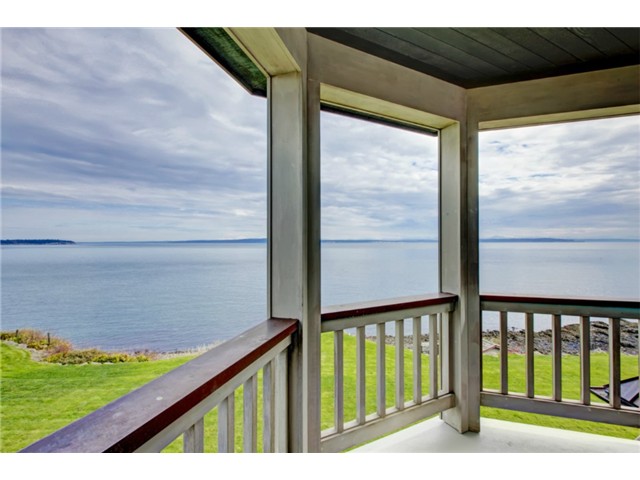Jeff Williams is a top-producing Realtor with Windermere in Tacoma specializing in the purchase and sale of historic and luxury homes. Click here to email Jeff or give him a call at 253-303-1135.

The Proctor District is one of North Tacoma’s most popular neighborhoods. Historic homes, great public schools, tree lined streets, views of the water and a charming central business district are just a few of the things that make this neighborhood so special. For those who aren’t familiar with Proctor (and for those who are already fans), I thought I’d share some of my favorite things about the place we call home.
Metropolitan Market – Met Market is the undeniable anchor of the Proctor District. This upscale grocery store caters to a sophisticated palate, with many locally sourced products, an outstanding cheese department and a wine steward. Met Market could feel some heat if Whole Foods delivers on their promise to open a store in University Place, but the neighborhood feel at the Met will always be hard to beat.
Chalet Bowl – This family owned and operated 12-lane bowling alley “strikes” a wonderful balance between old school Americana and new school hip. The lanes are well maintained, the staff is extremely friendly and the weekly bargain specials are hard to resist. Two words. Glow Bowling.
Wheelock Public Library – This local library has been serving the community since 1927 and is much used and much loved by children and adults alike. An iconic bronze statue of Tacoma pioneer and early businessman Allen Mason located adjacent to the library is often whimsically decorated to befit the season.
Puget Park – Located at the corner of Proctor and N. 31st Street, Puget Park was one of the first green spaces to be donated to the city of Tacoma for public use in 1888. The park features an updated play area and a picnic-perfect grassy knoll. If you’re feeling adventurous, you can follow a trail down through Puget Gulch to the waterfront for a wilderness experience right in the heart of the city.
Blue Mouse Theater – Originally opened in 1923 and now listed on the National Register of Historic Places, the Blue Mouse is Washington State’s oldest continuously operating movie theater. A group of local activists and preservationists purchased and restored the theater in 1993. Dale Chihuly reportedly designed the blue neon mice that grace the marquis.
Mark Pinto is a top-producing Realtor with Windermere in Tacoma specializing in the purchase and sale of historic and luxury homes. Click here to e-mail Mark or feel free to give him a call at (253) 318-0923.

With market values in Tacoma’s North End on the rise, we’re often asked by our clients to “keep our eyes open” for a house exactly like theirs but with a water view. The implication being that if they found a view home that was as nice as their current residence, they would want to buy it. The follow-up question from them is inevitably, “how much more would that cost?” Well, that isn’t always an easy question to answer. When showing homes to buyers that are specifically interested in purchasing a view property, it becomes readily apparent that not all views are created equal. I did some digging and found an article published in 2011 by the Texas Association of Appraisal Districts that mirrors my experience with the Tacoma housing market. It states the following:
Market studies support the premise [that a view adds value], with one study concluding that . . . “in addition to square footage and lot size, view is the most significant determinant of home value.” A panoramic view (breadth and/or depth in aspect) tends to command the ultimate premium, . . . a near view of a prized view object is preferred over a far view, while the ability to see a far distance is prized over a vista that is foreshortened. Other things being equal, an obstructed (or keyhole) view will draw a lesser premium. A view only visible from the upper floor of a single family residence likely draws a lesser premium. A damaged view (a mountain view marred by overhead power lines or a junkyard in the foreground) will likely invoke a lesser premium. View orientation can influence value. It is said that the view from the “back” of a residence (where family rooms and patios are often located) is significant, while the view from the front door is less significant.
A study of 1984 – 1993 data from Bellingham, Washington found that a view added a 25.9% premium to home value. When the views were differentiated, however, the study findings were more informative: poor partial ocean view (8% premium), good partial ocean view (29% premium), unobstructed ocean view (59% premium), and water frontage (127% premium). (See the full study here)
I was curious to see if view homes in North Tacoma garnered this same price premium so I pulled recent sales data specific to the North End, comparing similar houses in the same neighborhood with and without views to determine pricing differentials. The exercise is a challenging one, but I was able to find three pairs of properties of the same size and condition but differing in view (see below for side-by-side comparisons). The view homes sold for 51%, 40% and 55% more than their non-view comparables for an average premium of 49%. My sample size is obviously too small to draw definitive conclusions, but I think the results do support the findings of the study discussed above. The results also echo what I always tell our real estate clients when they ask me “how much more for a view property?”… expect to pay at least 50% more for a great view property and be prepared to wait. Patience is everything.
| 7213 N. 25th Street
5 bedroom, 2.5 bath, 3,032SF Built in 1970, sold for $425,000 on 9/20/2013 |
1818 Skyline Drive
5 bedroom, 2.75 bath, 3,000 SF Built in 1965, sold for $282,000 on 12/13/2013 |
| 3009 N. 31st Street
3 bedroom, 1.5 bath, 2,006 SF Built in 1906, sold for $462,000 on 8/28/2013 View: unobstructed water view from rear |
2210 N. 29th Street
3 bedroom, 2 bath, 1,820 SF Built in 1904, sold for $330,000 on 10/23/2013 |
| 3712 N. 39th Street
2 bedroom, 1.75 bath, 1,606 SF Built in 1916, sold for $460,000 on 07/31/2013 |
3905 N. 35th Street
3 bedroom, 1 bath, 1,358 SF Built in 1922, sold for $297,000 on 8/1/2013 |
Jeff Williams is a top-producing Realtor with Windermere in Tacoma specializing in the purchase and sale of historic and luxury homes. Click here to email Jeff or give him a call at 253-303-1135.

Jeff Williams is a Realtor with Windermere specializing in purchase and sale of historic and luxury homes in and around south Puget Sound. Click here to email Jeff or give him a call at 253-303-1135.